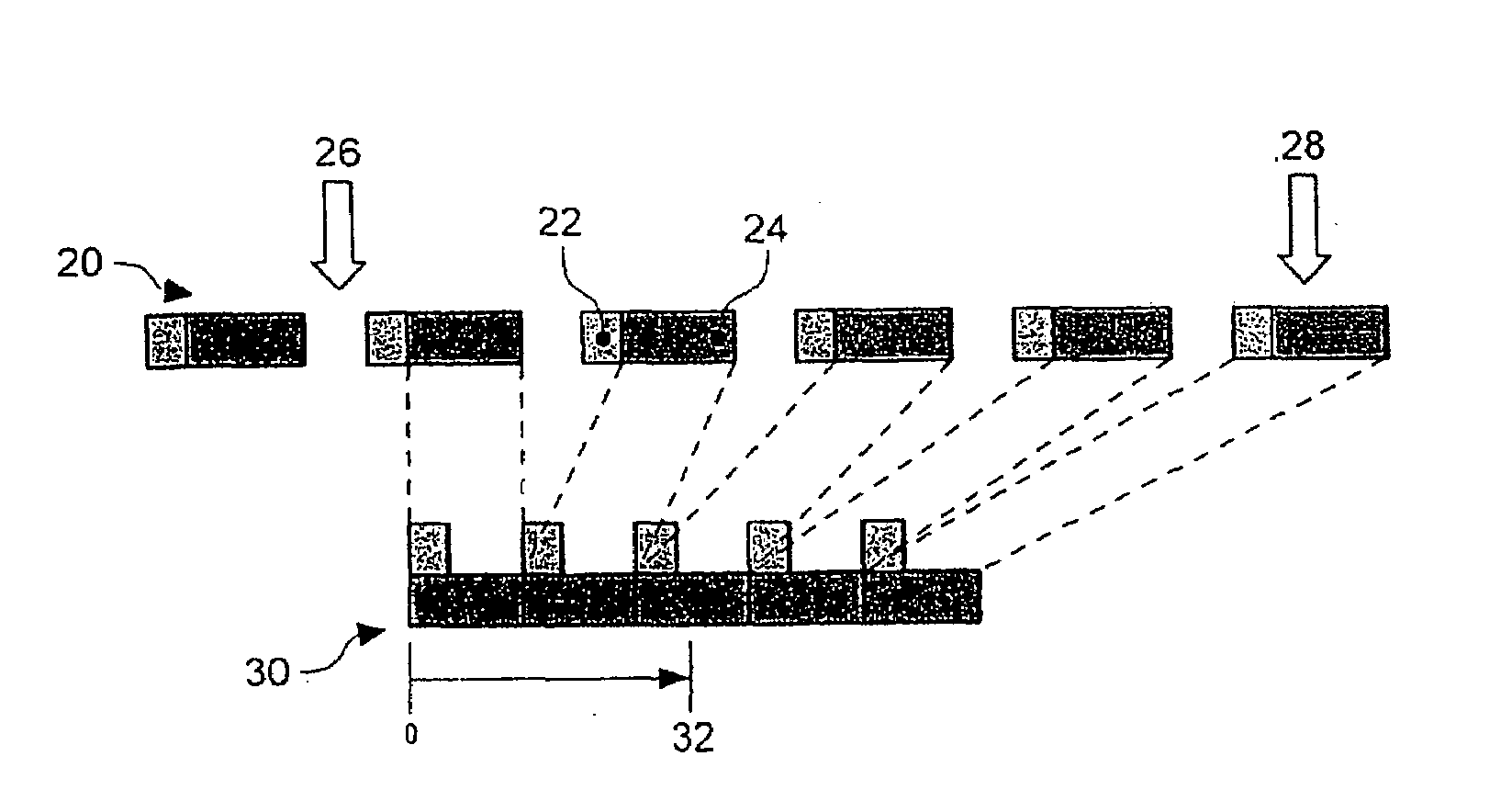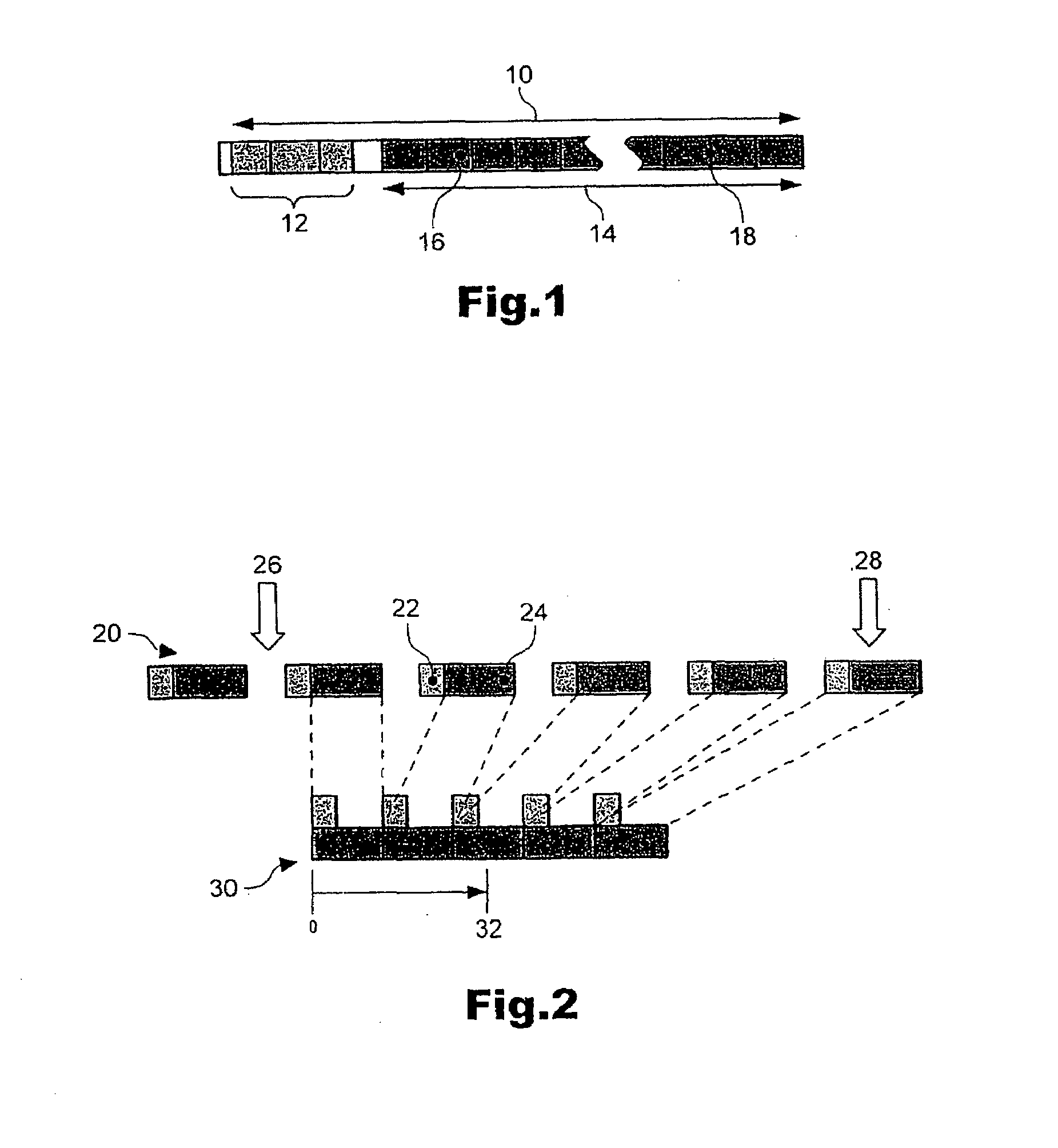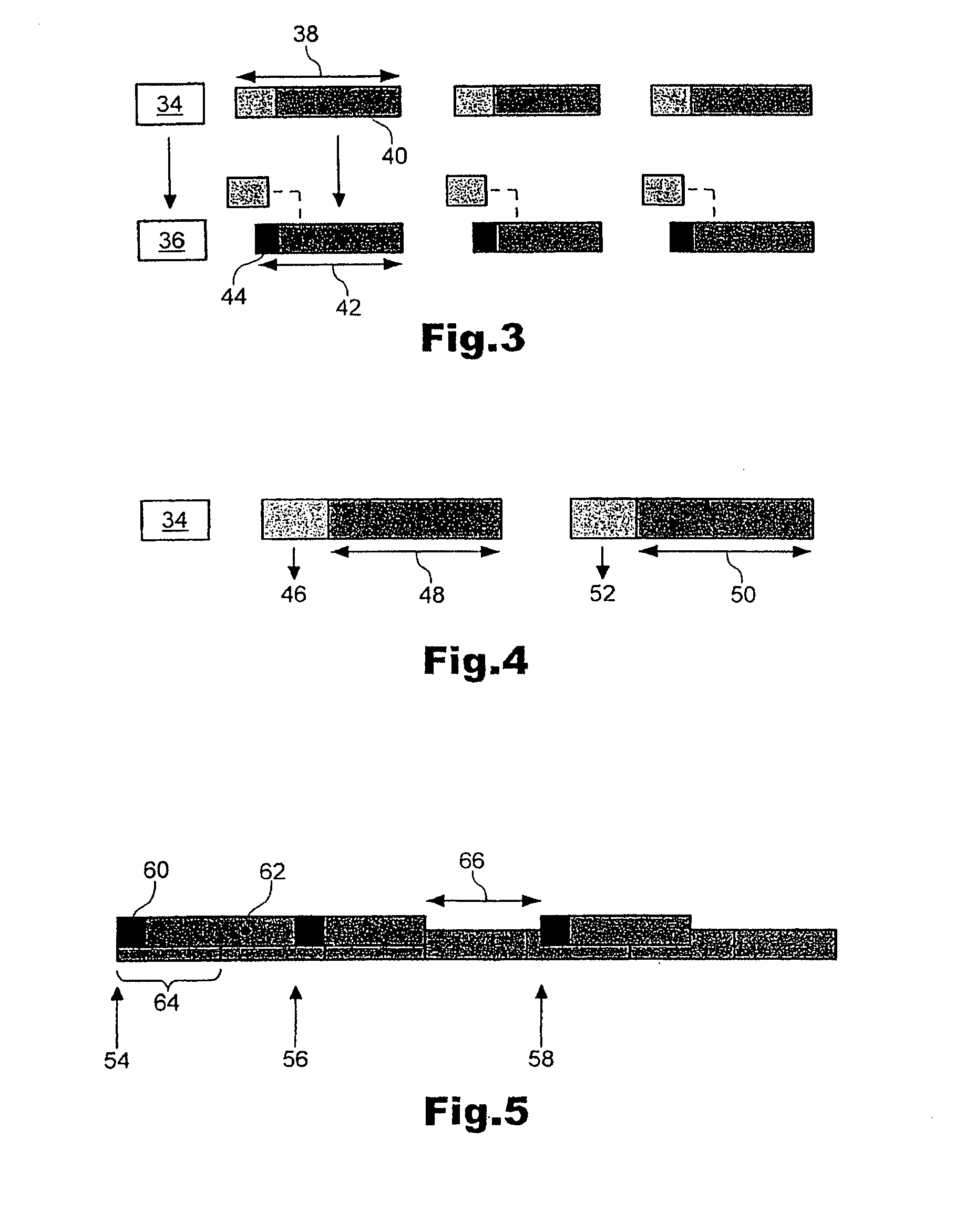Content synchronisation for mobile communication network
a mobile communication network and content synchronisation technology, applied in the direction of synchronisation arrangement, data switching network, broadcast service distribution, etc., can solve the problems of mce generating idle gaps in packet stream, unable to ensure that the queuing in the enodebs will remain stable, and must be managed from time to tim
- Summary
- Abstract
- Description
- Claims
- Application Information
AI Technical Summary
Benefits of technology
Problems solved by technology
Method used
Image
Examples
Embodiment Construction
[0051]It is assumed that the air-interface resources, and associated L1 parameters, allocated for an eMBMS service are fixed, at least throughout a session. Furthermore, it is assumed they are divided into transport blocks of identical capacity. Furthermore, it is assumed that the MAC layer consumes a fixed overhead. The net result of these assumptions being that the RLC in the eNodeB produces RLC PDUs of a fixed, known size per service session, which map to transmit opportunities. However, for clarity, a single size is assumed in the following, although the scheme could be adjusted to predictable variable sizes.
[0052]The RLC PDU is composed of a fixed header and a payload portion. The payload defined here will actually include some overhead as well as the data (RLC SDUs or segments thereof), but this way of presenting the RLC process is best suited to the scheme. Whatever the available RLC PDU size and the size required for the header, the payload portion is byte aligned and holds ...
PUM
 Login to View More
Login to View More Abstract
Description
Claims
Application Information
 Login to View More
Login to View More - R&D
- Intellectual Property
- Life Sciences
- Materials
- Tech Scout
- Unparalleled Data Quality
- Higher Quality Content
- 60% Fewer Hallucinations
Browse by: Latest US Patents, China's latest patents, Technical Efficacy Thesaurus, Application Domain, Technology Topic, Popular Technical Reports.
© 2025 PatSnap. All rights reserved.Legal|Privacy policy|Modern Slavery Act Transparency Statement|Sitemap|About US| Contact US: help@patsnap.com



